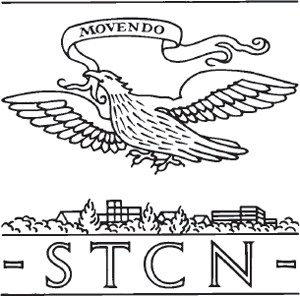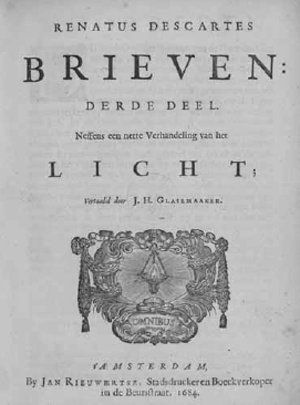Jaarboek voor Nederlandse Boekgeschiedenis. Jaargang 16
(2009)– [tijdschrift] Jaarboek voor Nederlandse Boekgeschiedenis–
[pagina 37]
| |
Rémi Mathis
| |
Defining the scope and general patternA national retrospective bibliography may be defined as a list of books produced in a given country or written in a certain language during a specific period (often 1450 or 1500-1800; sometimes the time span is reduced to one century). National bibliographies usually contain comprehensive and scholarly descriptions. They must not be confused with union catalogues. The latter are useful to describe the collections held in specific libraries but are never as consistent and homogeneous as the former try to be. In a | |
[pagina 38]
| |
national bibliography the books within the scope of the project are arranged by edition in a consistent manner. Both instruments do not serve the same purpose. Even though the idea of compiling exhaustive lists of books published in a particular country was raised very early on, national retrospective bibliographies did not appear before the middle of the 20th century. Because such projects called for an extensive budget that could not be raised before, most of these bibliographic projects were undertaken by national libraries. It was not until 1878 that the brand new Library Association proposed to produce a ‘general catalogue of English literature’ that was to describe ‘all books printed in English, either in the United Kingdom or abroad [...] brought down to the latest possible date’.Ga naar voetnoot2 It turned out to be a failure, but the idea of a national catalogue produced by a team of bibliographers, was born. In 1904, the establishment of the Kommission für den Gesamtkatalog der Wiegendrucke in Berlin took up the idea, and in England, E. Gordon Duff published Fifteenth Century English books. In 1918, A.W. Pollard, keeper of the printed books in the British Museum, put forward a proposal to the Bibliographical Society to compile a national catalogue of all books published in English before 1640. He was soon supported by Gilbert R. Redgrave, and their Short-Title Catalogue was first published in 1926.Ga naar voetnoot3 Most of the books described were from collections in the British Museum and the Cambridge and Oxford University libraries. But Pollard and Redgrave were aware of the importance of taking into account the collections of libraries abroad, such as the Huntington Library (California). This project was continued for the period 1641-1700 by another bibliographer, Donald Goddard Wing.Ga naar voetnoot4 Thus, at the beginning of the 20th century, the idea of compiling a comprehensive census of the book production of a country (and not be satisfied with inventories of library collections) evolved into a format - the stc. This pattern of purely functional descriptions (chosen as it allowed a quick output and also saved space) characterised all national bibliographies for almost a century. But even though their general methods are comparable, each bibliography has its own characteristics: created by an institution, a national bibliography is not a purely scientific item; it often remains rather ambiguous in the definition of its object of study. For instance, it is well known that borders of countries have changed since 1500. Talking about German, French or Dutch books as if they constitute stable definitions throughout the past five centuries may be rather deceptive. Thus, as the word ‘national’ can be ambiguous, it is important to specify the definition and scope of the project precisely. The first step while planning a national retrospective bibliography is to define the extent of the work. But one can easily imagine that this definition does not depend on scholarly considerations only. The outlines of | |
[pagina 39]
| |
national bibliographies are never comparable, as they depend on national culture and the project organiser. German culture obviously does not correspond to the borders of the present Bundesrepublik Deutschland, even after the reunification: excluding books published in Switzerland would not make sense. This is why vd16 and vd17 are called Verzeichnis der im deutschen Sprachbereich erschienenen Drucke des 16. JahrhundertsGa naar voetnoot5 and Verzeichnis der im deutschen Sprachraum erschienenen Drucke des 17. JahrhundertsGa naar voetnoot6 (Catalogue of 17th century books printed in the German-speaking areas). It proved impossible not to include books published in Switzerland, Austria and even parts of France (Montbéliard, etc.), the Czech Republic, Poland, etc. The importance of these regions is however reduced by the fact that vd16 and vd17 mainly describe books held in German libraries.Ga naar voetnoot7 A national bibliography can also focus on a specific language in order to emphasize a culture which has long been lost among others, when a nation did not correspond to a country. Even though Hungary was only a province of the Habsburgh Empire, it has always had its own culture and language: describing books written in Hungarian enables a focus on the production of a particular culture.Ga naar voetnoot8 But the process becomes more questionable when you also consider books written in Latin by Hungarians as hungarica (which are to be described in the Hungarian national bibliography) since ‘Hungarian’ was a very blurred concept in the 17th century. At this point scholarship mingles with politics, which raises the issue of a national bibliography as both a historical and a prestige object.  Figure 1: The stcn-logo was drawn by Bert van der Veer in 1983. The emblem is based on the printer's device of Franciscus Hackius who worked in Leiden between 1638 and 1669
| |
[pagina 40]
| |
The stcn is also concerned with these issues since ‘the Netherlands’ did not always denote the same geographical area in the period covered by the stcn. The stcn has decided to take into account all books published either in Dutch or within the current borders of the Netherlands. Although this decision is understandable, it raises the problem of Dutch books produced in Flanders: on the one hand, these books primarily belong to the Belgian national bibliography; on the other hand, not to include Flemish books published at a time when intellectual and commercial exchanges between the Northern and the Southern Low Countries were very important, would cause a serious hiatus. Fortunately, in Belgium the stcvGa naar voetnoot9 is being produced. Together, the stcn and the stcv could be considered as the actual Dutch national bibliography, a virtual Short Title Catalogue Low Countries. | |
Organizing the workWhen a huge amount of books is to be described, the organisation of the work is a major issue. Two main approaches can be identified, which can be defined as centrifugal and centripetal. In the centrifugal organisation, books in libraries all over the country or the world are described. Thus, the number of people involved is large, which is both convenient and not. It gives the project a large workforce and it enables it to take into consideration almost all the libraries of a given territory. But, with the workforce being distributed over a large geographical area, maintaining a high bibliographical standard is difficult. Almost every national bibliography uses the centrifugal method, maintaining only a small editorial team that receives information and co-ordinates the project. It is the easier way to work when you are faced with having to incorporate the holdings of many libraries scattered around the world. Such is the case for the ESTC,Ga naar voetnoot10 which contains descriptions of books held by more than 2000 libraries - mostly, but not exclusively, in the uk and the usa. Another example is the Italian Edit16,Ga naar voetnoot11 which tries to make as comprehensive a census as possible of 16th-century Italian books. In a country where there was no centralism before the end of the 19th century, early printed books are scattered in many local, religious and private collections. It is therefore impossible to send a team to each of these numerous libraries. According to iccu, Edit16 is ‘frutto di una collaborazione tra le biblioteche che forniscono i dati e l'iccu che li elabora’ (the result of the cooperation between the libraries providing the iccu with data and the iccu working on it). Despite the local difficulties, the aim is to compile a national biblio- | |
[pagina 41]
| |
graphy since Italy already has a union catalogue, sbn.Ga naar voetnoot12 As a matter of fact, except for small countries or ones where very few books have been published (the Philippines for instance)Ga naar voetnoot13 the cooperation of various local libraries is the rule. The situation in the Netherlands is nevertheless very different compared to that in Italy or in the English-speaking countries. The majority of books are held by a small number of libraries: the university libraries of Amsterdam (uva and vu), Leiden, Utrecht, etc., the kb and a few municipal libraries. The stcn-team could afford a centripetal way of dealing with material because it was not impossible to send its staff to each of these libraries. The team therefore not only receives and edits the information but also describes books (with book in hand). It requires competent bibliographers who have to learn and share exact rules and procedures. Of course, the leaders of such a project never have as many personnel as they wish. While several hundred people have participated in the estc and in Edit16, only a few persons have been working for the stcn. This way of working means that the bibliography takes longer to complete and a smaller number of libraries can be visited. But this method is the only one to guarantee validated descriptions, that is, the most precise ones. Obviously, the added value of a national bibliography lies in the consistency and precision of the descriptions. There is a close link between the method of working and the quality of a national bibliography. Compared to the stcn, the first type of organisation (centrifugal) holds the risk of producing nothing more than a kind of union catalogue (instead of a genuine bibliography), which is less useful for researchers. | |
Giving access to a databaseSo far, we have been talking about back office work, and the consequences it may have on the final product and the way users will consider it. Let us now have a look at the most important point: what the database produced looks like. Bibliographies are not catalogues. They do not describe copies but editions - or, most of the time, issues.Ga naar voetnoot14 It is very hard to know whether a bibliography is comprehensive, since one of the objectives of the bibliography is to determine its size. You do not always know whether an existing impression is missing from the database until you find and describe it. Thanks to the precision of the description method of the stcn - above all, the use of the fingerprint - the various editions of a book can be found, which is not always the case in other bibliographies.Ga naar voetnoot15 | |
[pagina 42]
| |
We must be aware of the fact that almost all the bibliographies mentioned are works in progress. New items requiring description can always be found, and technological developments lead to constant changes. The stcn is now considered completed but we can nevertheless be sure it never actually is. Yet, it is true that it is easier for a bibliography of a small centralized country to be comprehensive: with only the books held in less than ten libraries, a high percentage of the national production can be described. Furthermore, not many people spoke Dutch abroad; the books written in this language were not widely exported and you cannot find a lot of them in the rest of Europe. On the other hand, as a result of the relatively large freedom of the press, many Latin and French books were produced in the Netherlands and exported on a large scale. Actually, one of the most important issues concerning the comprehensiveness of the stcn arises from false addresses. Many 18th-century French booksellers pretended that their books were published in the Netherlands, while they would never even reach the Dutch borders. Consequently, those books are rarely held in Dutch libraries: the stcn cannot be considered totally completed if the team does not describe books held in French libraries. The more the standardised descriptions are, the easier it is to compare editions, which is one of the useful purposes of such a bibliography. The centrifugal way of working generates different qualities of description depending on who describes the book and the data received by the central team. It can get even worse when older printed bibliographies are re-used, which is the case with Edit16 and estc. Thus, Edit16 has three kinds of records: Massimo for checked and localized notices; medio for notices localized, but not checked or not checked completely; minimo for notices retrieved from printed catalogues or not localized and unchecked notices.Ga naar voetnoot16 The estc has the same system and its entries may vary in editorial status and completeness. The stcn is completely different in this respect. The descriptions are made by the bibliographer with the book in hand, and checked by a senior colleague still with the book on the table and are all identical in format, which makes the stcn the more homogeneous bibliography, allowing for easy bibliographic comparisons and statistical inquiries. Once again, we should emphasize the impact the method has on the quality of the bibliography. The method the stcn uses is labour-intensive, but effective. The superiority of the stcn lies in its precision, allowing for a large number of fields that can be searched and cross-searched. No less than 21 fields are available in the stcn, which not only concern the text but the physical format of the book as well. Surprisingly, this is not possible in all bibliographies investigated: for instance, there is no way to search for octavos in vd17. Not to mention printed bibliographies! The stcn, however, proposes a wide range of entries, including unusual ones, such as the presence of a title-page in ‘more than one colour’. To make the search process easier, the stcn has added subject headings to its descriptions, as have vd17 and estc. Another issue is derived from the history of these projects. They are all branded by the stc format. Although the necessity for the early printed bibliographies to be as concise as possible to save paper is no longer a concern in online publishing, the various | |
[pagina 43]
| |
projects have chosen different options to fill the available space. Whereas the estc has decided to add the full title-page transcription of more than 100.000 18th-century records, vd17 and the stcn have chosen to add a photograph of the title-page. The first solution gives more extended search options while the second one allows for easier comparison of editions.  Figure 2: The frontispiece of an international bestseller in a Dutch translation: Cervantes' Den verstandigen vroomen ridder, Don Quichot de la Mancha, in a translation Lambert van den Bos, was published in Amsterdam by Baltes Boekholt in 1669 and 1670. (Koninklijke Bibliotheek, 3180 G 31)
 Figure 3: The works of controversial authors such as Descartes were published in the Netherlands in French, Latin and Dutch translations (Universiteitsbibliotheek Amsterdam, O 60-3404)
| |
ConclusionWhat remains to be said about the stcn after this short overview of national retrospective bibliographies? First, it does exist! Not all countries have a national bibliography. Among the major European countries, we notice that France and Spain have never launched such a project, which is highly detrimental for all European scholars. Even where this kind of work exists, it has often been produced in the beginning of the 20th century and is scarcely accurate.Ga naar voetnoot17 | |
[pagina 44]
| |
Above all, it must be clear that compiling a national bibliography is not a mechanical work but a highly complex process, where several scholarly, political, historical, cultural and prestige issues come together. Choices always have to be made at every stage and those made by the stcn are surprising - remember that they were made during the 1970s when there were almost no computers - and accurate. Even though they were made at a time when the bibliography was envisioned to be in printed form, the creators of the stcn decided to describe details which turned out to be very useful for an electronic database. They decided to spend ample time on the project because its value lay in precision and homogeneity. A vague and imprecise bibliography is hardly more useful than a union catalogue restricted to local books. Using a very accurate fingerprint, the stcn is precise and comprehensive enough for statistical analysis, which is both extremely rare and highly precious. Scholars can look forward to using both the stcn and the stcv in their research into Dutch early printed books.
Today, the issue is no longer the realization of a bibliography but its inclusion in a larger landscape. Just as Edit16 is used as a basis for the study of dedicatory epistles,Ga naar voetnoot18 the stcn can both be used by itself or as part of a general system including digitised books or websites such as Bibliopolis. In a 2.0 world, retrospective national bibliographies cannot be separate: in this respect too, the stcn shows the way. |
|

